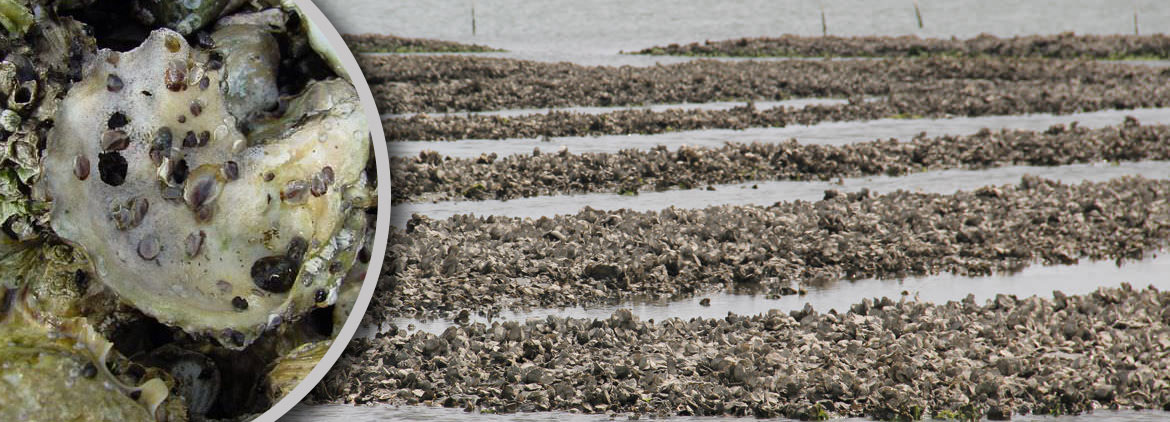What is spat?
Once oyster larvae permanently attach to a surface, they are known as spat.

Once oyster larvae attach to a surface, such as other oyster shells, they are known as spat (shown in inset image). As generation after generation of spat grow into adult oysters, they form dense clusters known as oyster reefs or beds.
Oysters are a type of shellfish that live in brackish and saltwater bays, estuaries, and tidal creeks. When oysters reproduce, they spawn tiny larvae that freely navigate the water column until they find an appropriate habitat with a structure to settle on. Once the larvae permanently attach to a surface, they are known as spat.
Oysters are frequently cultivated for food and pearls. The successful farming of oysters and other shellfish relies upon successful settlement of larvae onto a selected substrate—typically other oyster shells or ceramic tiles—within a hatchery or wild setting. The tiles or shells that hold the spat are secured to frames or in cages and submerged along an intertidal area or suspended from a long line. From this point forward, the oysters are self-sustaining, filtering all the nutrients they need directly from the water in their environment.
Because oysters are filter feeders, they help keep the water clean. This promotes the growth of underwater grasses, such as wild celery, which serve as important habitat for other species. In addition, oyster beds form large, complex structures where many aquatic species, such as fish and crabs, hunt for food and hide from predators.
Get Social
More Information
Did you know?
Oyster farming is a great way to improve water quality! A NOAA study found that shellfish aquaculture helps to remove excess nutrients and reduce eutrophication from our waterways. Eutrophication—excessive nutrient input into estuarine and coastal environments—can lead to algal blooms, oxygen depletion, fish kills, and a loss of key habitats.

Last updated: 06/16/24
Author: NOAA
How to cite this article